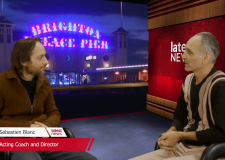Barclay Thompson’s Clear Business
SMART Grants for Innovative Businesses – is there such a thing as a free lunch or is it just Pulp Fiction?
The Characters
I have been a business consultant since 1998, working with creative and innovative enterprises, and during that time the question I have been asked the most by clients is “can I get a grant for this?” Usually the answer is a “no”, mitigated by my words of consolation to the effect that “the best way to fund a business is by generating profits and that applying for grants can be time consuming and disrupt day to day business”.
However, every once in a while a situation arises where there is not only a grant available, but also a client who is a perfect match for it. Just such a situation arose last November when I was advising a technology company, which had a great idea as to how to develop and market an innovative new online data publishing system. Furthermore, they also had the track record, experience and market knowledge from having developed complex databases, printed directories and data driven websites for some of the UK’s leading information publishers since 2007.
The Beginning of the End
The funding in question was a SMART Grant available from The Technology Strategy Board the UK’s National Innovation Agency and the decision to apply was, as they say a ‘no brainer’. Those of you who have seen Pulp Fiction, and let’s face it who hasn’t, will remember that the opening scene is actually also the beginning of the closing scene. With apologies then to Quentin Tarantino for (ab)using his cinematic device I would like begin near the end of our journey and quote the summary of one of the three experts who appraised our application: “This is an excellent application. This is heads (sic) and shoulders above most others and could serve as an example of how to make an application for public money. The level of detail and care put into the form and the supporting documentation is impressive and praiseworthy. The result is a project plan and budget that has every chance of succeeding and is a worthy recipient for funding.”
The Background
First some background information: The Technology Strategy Board is an executive non-departmental public body (NDPB), sponsored by the Department for Business, Innovation and Skills (BIS). Its vision is for the UK to be a global leader in innovation and a magnet for innovative businesses, where technology is applied rapidly, effectively and sustainably to create wealth and enhance quality of life. Its goal is to accelerate economic growth by stimulating and supporting business-led innovation. It offers a range of funding and support options of which the SMART Grant to support the ‘Development of Prototype’ was clearly the most appropriate for my client. There are also SMART Grants for ‘Proof of Market’ and ‘Proof of Concept’ for those whose project is at an earlier stage. The application process runs continuously throughout the year with 2 monthly cut off dates so that ‘batches’ of applications can be processed and decided upon.
And now let’s return to the beginning:
The Set-up
The application requirements were relatively straightforward and excellent guidance notes are provided. In effect we needed to create a business plan for the project complete with financial forecasts. Working through this process we found that the total project cost would be £230,000 over 18 months making it eligible for a SMART Grant of £103,500, the rest being funded by the applicants.
We held a meeting to scope out the application and I got to edit a first draft. However, my clients were very busy running their business and only the finished the final draft on deadline day, giving me no chance to reappraise it.
The application was rejected, but one of the benefits of this process is that the Technology Strategy Board provides you with detailed feedback from the three expert appraisers together with their scoring. It also gives applicants a second bite at the cherry, an opportunity we gratefully grasped after carefully dealing with all of the issues raised by the trio of experts.
The Finale
So is there a happy ending to this story? Well for starters – just as in Pulp Fiction nobody died at the end. Unfortunately that wasn’t the only similarity because just like “Pumpkin” (Tim Roth) and “Honey Bunny” (Amanda Plummer) in the film we didn’t come away with the money either. Why not? Well despite the quality of our application and the positive responses of the judges the project was ultimately not judged to be innovative enough, defined in the guidance notes as having to “…involve significant technical development (engineering) that produces at least a step change impact on how computers and other devices are programmed or used.” The business model was deemed highly innovative; the software itself was not. Of course we disputed this and felt we had argued the case, but the decision had been made.
Epilogue
So what did we all learn from the process apart from the fact that there really is no such thing as a free lunch? Well I suppose I had the satisfaction of learning that I had helped my clients produce “…an excellent application”, one that could ‘…serve as an example of how to make an application for public money.” On a negative note my clients learned that doing things at the very last minute, especially when very large sums of money are in the balance is not a very good idea! But far outweighing that a real positive is that they had their technology idea, business model and strategy appraised by three industry experts and all found them to be sound. This has provided my clients with the impetus to develop a strategy to ‘bootstrap’ the project and fund the development out of the profits of their current business. Not free perhaps – but lunch will be served!
Coming Next: Shaking the Money Tree – Is Funding for Lending a new dawn for financing your business?
Barclay Thompson, Clear Business Development Limited, http://www.reallyclear.co.uk




















